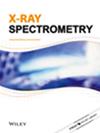How reliable is the X‐ray fluorescence‐based differentiation between glass wool and rock wool and the age classification of rock wool?
IF 1.5
4区 物理与天体物理
Q3 SPECTROSCOPY
引用次数: 0
Abstract
A prerequisite for the recycling of mineral wool is information about the type of material, that is, whether it is glass wool or rock wool. As mineral wool produced before the year 2000 can be potentially carcinogenic, it is furthermore important to distinguish between “old” and “new” wool when handling the material. Based on VDI 3492, it is possible to determine the material and, in the case of rock wool, the age by analyzing the mass fractions of eight oxides, which are the main components of mineral wool. This study presents the X‐ray fluorescence (XRF) analyses of 141 man‐made mineral fibers collected in Germany. Only in a few cases it was not possible to clearly assign the material type. In contrast, the identification of “old” and “new” rock wool posed a challenge as there were many borderline samples. Based on the available data, a chemometric model was developed that can classify “old” and “new” RW with a sensitivity of 93% and 89% and with a specificity of 100% in both cases. However, care must be taken when oxide contents are close to the specification limits. The reason for this mainly lies in the overlapping intervals of key oxides as suggested by VDI 3492, and, to a lesser extent, in the uncertainties typically occurring in the XRF‐based analysis of oxides. With this study, a comprehensive collection and evaluation of XRF data on mineral wool is made available, which can serve as a reference database for future users.基于 X 射线荧光法区分玻璃棉和岩棉以及岩棉年龄分类的可靠性如何?
回收矿棉的一个先决条件是了解材料的类型,即是玻璃棉还是岩棉。由于 2000 年以前生产的矿棉可能会致癌,因此在处理这种材料时还必须区分 "旧 "矿棉和 "新 "矿棉。根据 VDI 3492 标准,可以通过分析矿棉的主要成分--八种氧化物的质量分数来确定矿棉的材质,如果是岩棉,则可以确定其使用年限。本研究介绍了在德国收集的 141 种人造矿物纤维的 X 射线荧光 (XRF) 分析结果。只有少数情况下无法明确确定材料类型。相比之下,"老 "岩棉和 "新 "岩棉的鉴别则是一项挑战,因为有许多样品都存在边界问题。根据现有的数据,我们建立了一个化学计量模型,该模型可以对 "老 "和 "新 "岩棉进行分类,灵敏度分别为 93% 和 89%,特异度均为 100%。不过,当氧化物含量接近规格限值时,必须小心谨慎。其原因主要在于 VDI 3492 所建议的关键氧化物的重叠区间,其次是基于 XRF 的氧化物分析中通常会出现的不确定性。本研究全面收集和评估了矿棉的 XRF 数据,可作为未来用户的参考数据库。
本文章由计算机程序翻译,如有差异,请以英文原文为准。
求助全文
约1分钟内获得全文
求助全文
来源期刊

X-Ray Spectrometry
物理-光谱学
CiteScore
3.10
自引率
8.30%
发文量
38
审稿时长
6-12 weeks
期刊介绍:
X-Ray Spectrometry is devoted to the rapid publication of papers dealing with the theory and application of x-ray spectrometry using electron, x-ray photon, proton, γ and γ-x sources.
Covering advances in techniques, methods and equipment, this established journal provides the ideal platform for the discussion of more sophisticated X-ray analytical methods.
Both wavelength and energy dispersion systems are covered together with a range of data handling methods, from the most simple to very sophisticated software programs. Papers dealing with the application of x-ray spectrometric methods for structural analysis are also featured as well as applications papers covering a wide range of areas such as environmental analysis and monitoring, art and archaelogical studies, mineralogy, forensics, geology, surface science and materials analysis, biomedical and pharmaceutical applications.
 求助内容:
求助内容: 应助结果提醒方式:
应助结果提醒方式:


